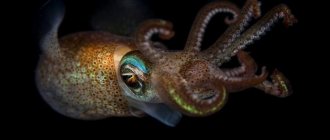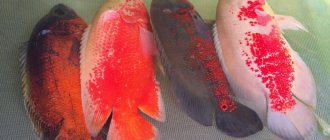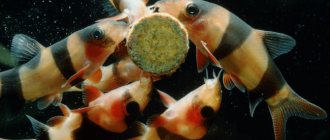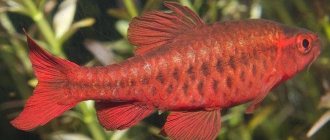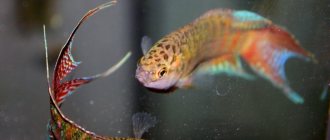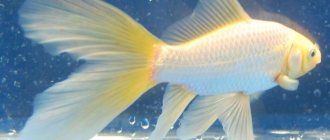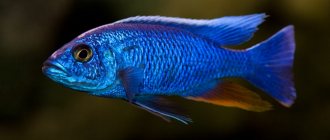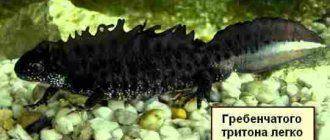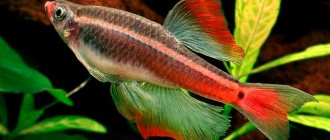Despite the fact that the turtle is unpretentious in food, its owners need to know how to properly feed the river resident.
Description
The European marsh turtle has an oval or rounded carapace, smooth, usually black or yellow-green in color. It is dotted with many small yellow or white spots, sometimes forming rays or lines. The shell is smooth when wet and shines in the sun, and becomes more matte as it dries. The head is large, slightly pointed, without a beak. The skin on the head is dark, often black, with small spots of yellow or white. The paws are dark, also with light spots on them.
Emys orbicularis has several subspecies that differ in color, size or detail, but most often in habitat. For example, the Sicilian marsh turtle (Emys (orbicularis) trinacris) with a striking yellow-green carapace and the same skin color. And Emys orbicularis orbicularis, which lives in Russia and Ukraine, is almost completely black.
Adult marsh turtles reach a carapace size of up to 35 cm and a weight of up to 1.5 kg. Although, when kept at home, they are usually smaller, despite the fact that the subspecies living in Russia is one of the largest.
The European marsh turtle is very similar to the American marsh turtle (Emydoidea blandingii) in appearance and habits. They were even classified for a long time in the genus Emys. However, further study led to the fact that these two species were divided according to differences in the structure of the internal skeleton.
How long does a marsh turtle live? There is no consensus on the life expectancy of a marsh turtle. But everyone agrees that she is a long-liver. The numbers range from 30-50 years to 100.
Selecting the site language
Afrikaans Albanian Amharic Arabic Armenian Azerbaijani Basque Belarusian Bengali Bosnian Bulgarian Catalan Cebuano Chichewa Chinese (Simplified) Chinese (Traditional) Corsican Croatian Czech Danish Dutch English Esperanto Estonian Filipino Finnish French Frisian Galician Georgian German Greek Gujarati Haitian Creole Hausa Hawaiian Hebrew Hindi Hmong Hungarian Icelandic Igbo Indonesian Irish Italian Japanese Javanese Kannada Kazakh Khmer Korean Kurdish (Kurmanji) Kyrgyz Lao Latin Latvian Lithuanian Luxembourgish Macedonian Malagasy Malay Malayalam Maltese Maori Marathi Mongolian Myanmar (Burmese) Nepali Norwegian Pashto Persian Polish Portuguese Punjabi Romanian Russian Samoan Scottish Gaelic Serbian Sesotho Shona Sindhi Sinhala Slovak Slovenian Somali Spanish Sudanese Swahili Swedish Tajik Tamil Thai Turkish Ukrainian Urdu Uzbek Vietnamese Welsh Xhosa Yiddish
General principles of keeping at home
Naturally, a large reptile needs a lot of space. This is why (and for a number of other reasons) keeping representatives of Emys orbicularis is considered relatively difficult, which does not, however, affect the growing popularity of marsh turtles.
To live in captivity, these animals should be provided with an aquaterrarium. This means that the aquarium should have 2 zones - water and land. The capacity of such a “dwelling” should not be less than 100 liters; otherwise the turtle will feel cramped.
The “wet” zone occupies most of the aquaterrarium, and an island of land should be placed in one side of the terrarium. This island can be made from stones, fastening them together with aquarium glue. For safe and easy access of your pet to land, it is recommended to make a flat plastic bridge.
In an aquaterrarium with sandy or pebble soil, it is recommended to plant aquatic plants, the foliage of which will sometimes act as a good nutritional herbal supplement.
What should housing be like?
At home, the European marsh turtle requires an aquaterrarium, the volume of which must be at least 120 liters, otherwise it will be cramped. In such a terrarium there should be two zones: water and dry, the first one is larger. The land part is available in specialized aquariums for marsh turtles. But if you only have an ordinary aquarium, then you can build an island yourself, for example, from stones glued together with aquarium glue that is harmless to animals.
It is not difficult to provide care for a marsh turtle at home. The water level is the first thing you need to pay attention to: for a baby it should be at least 10 centimeters, and for an adult a depth of 20-30 centimeters is required. The turtle should feel comfortable and free.
It is advisable not to leave the bottom covering bare; you need to put pebbles or sand, then plant aquarium plants that will not only decorate, but will also become an excellent addition to the turtle’s diet.
A mandatory point is the installation of additional lighting and heating. To do this, an ultraviolet lamp for reptiles and a regular lamp are mounted above the dry part.
The filter is installed only if a young turtle was taken. An adult who is not accustomed to operating equipment will perceive the filter as a threat, and this cannot be avoided without a fight!
All these points are discussed in more detail in the following content.
Water conditions
- Water level
The aquaterrarium should be maintained at a level of at least 25 cm, as the turtle must be able to swim freely.
- Required water temperature approx. +25°C
Under natural conditions, when the temperature drops, turtles hibernate, but in home aquaterrariums with constant water parameters, this is not observed. A water heater is required if the room temperature is lower than specified.
- Cleanliness is the key to health
Experts especially note the importance of monitoring the cleanliness of the aquatic environment, since the turtle will get sick in dirty water. This question is very relevant: animals not only defecate while floating, but also consume food in water.
It would seem that an effective powerful internal filter can solve the problem of cleaning aqua, but the fact is that in some cases large predatory turtles try to attack this object, perceiving it as a threat.
In this case, water purification should be carried out by replacing it in a volume of at least 50% every 2 days.
However, if baby turtles are released into an aquaterrarium, then during their life and development they are quite capable of getting used to the presence of a working internal filter
HEATING
Natural sunlight is best, and it is advisable to expose baby turtles to direct sunlight during the summer months. However, this is not always possible and an analogue of sunlight must be created artificially. To do this, in an aquaterrarium, above land, an incandescent lamp and a special lamp with UV rays, an ultraviolet lamp for reptiles (10% UVB), are placed.
Moreover, the height must be at least 20 cm so that the animal does not get burned. The temperature on land, under the lamp should be 30-32C, and the length of daylight should be at least 12 hours. In nature, they spend the winter and hibernate, but in captivity they do not do this and there is no need to force them! Her home conditions allow her to be active throughout the year; it’s not winter when there’s nothing to eat.
Animal feed
Young sliders should consume at least 70% animal food in their daily diet. Whereas older reptiles can completely switch to a plant-based diet or maintain meat consumption at 10-25%.
The turtle can eat raw and boiled (without salt and spices) pieces of lean meat:
- bird,
- rabbit meat,
- horse meat,
- beef.
Another element of the diet is offal:
- heart,
- navels,
- liver.
Smaller mice are also suitable for feeding.
The slider will not be able to digest fatty types of meat such as lamb or pork.
The fish is suitable for low-fat river fish, from which you need to remove the giblets and bones
It is important to soak the fish in hot water for a few minutes before eating to destroy the thiaminase enzyme to prevent the development of vitamin B1 deficiency.
Aquarium fish can be used as food. For example, swordtails, guppies, goldfish.
As a change to the main diet, a raw mixture of squid, green shrimp and octopus is added. It is sometimes acceptable to give the meat of some snails - mariz, coils, pond snails.
You can diversify the menu with the help of insects. You can feed your red-eared turtle:
- crickets,
- bugs,
- bloodworm,
- grasshoppers
- and even caterpillars.
You can add live or dried gammarus, daphnia and coretra - but this is done occasionally.
You should avoid pet cockroaches because these insects are often poisoned.
Madagascar cockroach
Land zone
It is needed so that reptiles can rest, warm up and dry out their shells.
The optimal temperature in the area of a land island is considered to be 30–35 degrees above zero, which is achieved by installing an ordinary incandescent lamp over this area.
It should be placed at a height of 25–30 cm from the surface of the land so that the animal does not receive burns. In addition, you should install a small ultraviolet lamp.
The fact is that UV rays promote the production of calcium in the turtle’s body, which is vital for the proper formation of the shell.
Many experts recommend feeding the animal on such an island, gradually accustoming it to this. If you achieve this “land” method of feeding, the water will maintain its purity longer.
Diseases
With proper care, the marsh turtle is practically not susceptible to disease. A reptile can contract the following diseases:
1. Pneumonia - pets living in colder water than necessary are susceptible to the disease. Lack of heating and additional lighting contribute to the development of this dangerous disease.
Symptoms of the disease are as follows: the turtle spends more time in a dry area, even refuses its favorite food, sputum may be released from the nose and mouth, and dry out with a white crust. The turtle will not swim as actively; it often falls to the side of the affected lung. Often turtles will begin to cough and sneeze, rubbing their heads with their front paws in hopes of clearing their airways.
If such symptoms appear, you need to urgently show the animal to a veterinarian, because the disease can cause asphyxia and then death. The doctor will prescribe treatment with antibiotics, without which pneumonia cannot be treated. It will also be necessary to increase the temperature in the terrarium on the dry part to +35 degrees, turn on the ultraviolet in the same way as before the disease.
2. Rickets - this disease develops in turtles with a lack of vitamin D and calcium. There is a lot of vitamin in sunlight, and ultraviolet lamp helps produce calcium.
Symptoms: the shell begins to grow pyramidally, it seems that it is too small for the turtle, and does not harden until it is a year old. The edges of the shell may begin to curl upward. The animal's limbs become twisted and fractures may occur. Weakness is observed in which the turtle will not be able to get out of the water onto land. Rickets is dangerous for a turtle due to pulmonary edema and heart failure, which leads to death. When the first symptoms appear, visit your doctor.
3. Helminthiasis - many turtles that are fed freshwater fish are susceptible to the disease.
Symptoms: see the parasites in person, the turtle refuses food or regurgitates it, becomes overly active.
4. Fungal skin lesions, eye inflammation. All these diseases threaten the turtle if the terrarium is not kept clean. Your pet's skin will crack and bleed, causing pain. The turtle's eyes will begin to discharge, drying around the edges.
The first step is to wash the turtle in a basin of boiled (cooled) clean water, adding a little manganese. Completely remove all water and sand from the terrarium, rinse the stones in water with manganese. Next, wash the walls of the terrarium, fill it with clean water and turn on the ultraviolet lamp for 15 minutes. Only a veterinarian can prescribe treatment for damaged skin and eyes!
Among other things, turtles are exposed to various injuries to the shell, limbs, and tail. The cause of injury may be a lack of calcium or a fall. If you notice something strange in your pet's behavior, take her to the vet immediately!
The European marsh turtle (Emys orbicularis) is a very common species of aquatic turtle that is often kept at home. They live throughout Europe, as well as in the Middle East and even northern Africa.
We will tell you about its habitat in nature, maintenance and care of a marsh turtle at home.
Features of nutrition in captivity
The main diet of a predatory turtle consists of protein food.
- You can and should give her pieces of fish (for example, hake, cod or pollock), shrimp, live or dried worms, and mussels.
- Beef liver will also work, but it can be served no more than once a week.
- Plant foods play the role of a vitamin supplement. Chopped and scalded leaves of spinach, lettuce, plantain or dandelion are quite suitable as such an additive.
There are many branded ready-made foods, including Reptomin from Tetra or Nutrafin, produced by Hagen. There are also ready-made balanced vitamin food supplements on sale (from Tetra or Hartz, for example), which are not recommended to be neglected. These additives have a positive effect on the formation of the skeleton and shell of reptiles.
Thus, keeping a marsh turtle cannot be called simple and easy. But all the listed care features and troubles will more than pay off when your pet gets used to you. The animal will trustingly rush to get out of the water in order to get pieces of tasty food from the hands of its owners. As a rule, the turtle gets so used to people that it does not hide its head under its shell, allowing itself to be stroked and even picked up.
APPEAL
Very smart, they quickly understand that their owner is feeding them and will rush to you in the hope of feeding them. However, at this moment they are aggressive and you need to be careful. Like all turtles, they are cunning and can bite, and quite painfully.
You need to handle them carefully and generally touch them less often. It is better not to give it to children, as they pose a mutual danger to each other. It is best to keep her alone! Swamp turtles are aggressive towards each other and even gnaw off their tails. And other aquatic species are either competitors or food for them, this also applies to fish.
Feeding
What to feed a marsh turtle ? The main thing is not what, but how. Turtles are very aggressive when feeding!
It feeds on fish, shrimp, beef heart, liver, chicken heart, frogs, worms, crickets, mice, artificial food, and snails.
The best food is fish, for example, you can put live fish, guppies, directly into the aquarium. Juveniles are fed every day, and adult turtles every two to three days.
They are very greedy for food and easily overeat.
For normal development, turtles need vitamins and calcium. Usually artificial food contains everything a turtle needs, so adding food from a pet store to the diet will not be out of place.
And yes, they need sunlight to absorb calcium and produce vitamin B3. So don’t forget about special lamps and heating.
Terrarium
The terrarium must be sufficiently free (120–150 liters, 120 liters is at least for 1 individual), which consists of two halves - water and land, with a ladder between them. It is preferable to have a pond with a depth of up to 10 cm for small specimens, for large ones 15–20 cm. An ultraviolet lamp and an incandescent heating lamp for reptiles (10% UVB) are placed above the dry part of the territory at a height of at least 20 cm.
There must be a water filter and a water heater (a heater, however, is not required if the water temperature does not drop below 24-26 degrees, in fact, this is what it should be). On land, the air temperature in front of the lamp is 30-33 C. Turtle in the cold period of the year in natural conditions goes into hibernation, but at home at a temperature of 22–25 ° C this fact does not happen.
To prevent the water from becoming polluted, the turtle is transplanted into a basin or bathtub and fed there, and then put back into the aquarium.
Should I bathe my turtle and how often should I change the water?
Considering that the marsh turtle lives in water, many owners have a question: do they need to bathe the reptile? Precisely because the reptile is aquatic, some pet owners doubt the advisability of carrying out such a hygiene procedure. But since it is almost impossible to keep the aquarium perfectly clean and dirt appears on the animal’s shell, it must be removed mechanically.
Water hygiene procedures are necessary as dirt forms on the shell. Wash your pet in warm water with a soft cloth, or better yet, a brush. In no case is it permissible to use hard materials that can damage the keratinized covering of a pet.
A marsh turtle in an apartment should be kept only in clean water. First of all, this is due to the fact that the animal defecates directly where it lives, thereby leading to pollution of water resources. Reptile owners must constantly monitor the purity of the water, otherwise it can cause various diseases in the reptile.
A complete change of water and cleaning of the aquarium should be carried out at least once a month. In order not to disturb the animal, you can leave a small amount of water in the container, diluting it with fresh water. Aquarium experts recommend using distilled tap water. At the same time, if you install high-quality filters, then cleaning in the turtle’s home will occur much less frequently.
Additional information
Scientists identify 13 subspecies of the marsh turtle in nature, but only 5 are found in Russia. In the summer, turtles live near bodies of water and, if an enemy appears, they rush into the water and dive to the bottom, often burying themselves in silt. Swamp turtles hibernate in the fall, in October, thereby waiting out the winter at the bottom of reservoirs.
Adults and large
individuals can at times be hostile and try to bite. It is necessary to take them by the edge of the back of the shell, since the head on the long neck has great physical activity. The bite can be very painful, since, having grabbed the soft part of the hand with its mouth, the turtle convulsively clenches its jaws several times. However, if you treat this animal well, they instantly become tamed, stop hiding their head under their shell, and, on the contrary, pull it towards the owner-breadwinner.
Reproduction of swamp turtles
This reptile reaches sexual maturity at approximately 6-8 years of age, when their shell acquires a length of 10-12 cm. Under natural conditions, the mating season begins in the spring. Males are characterized by aggressive behavior and are capable of pursuing females. Their mating games are quite dynamic and involve sniffing the tail and paws. Mating can take place both in water and on the shore.
The female lays eggs after about 1-2 months. During this period, they need increased nutrition, and the food should contain more vitamins, protein and calcium than usual. Also, they need higher air and water temperatures - this will ensure the absorption of nutrients. A few days before laying eggs, the female stops eating - this sign is used to determine that she will soon lay eggs.
The female places the eggs in the ground, digging small holes 10 cm deep. During the period from May to June, the female makes about 3 clutches. Eggs have a regular elongated shape and a white shell. They are small (about 3x2 cm), weigh about 8 g. The number of eggs in a clutch is from 5 to 10 pieces. After 2-3 months, the cubs hatch from them. Their weight is 5 g, size is 2.4-2.5 cm. They have a yolk sac on their belly. The color of the shell is most often dark brown, decorated with yellow lines.
The kids spend the winter near the masonry, digging small holes. In the spring they leave their shelters and begin an independent life.
Characteristics of this species
The European marsh turtle is characterized by a brown-brown or dark olive oval shell (carapace) with diverging lines or bright yellow dots, paws with sharp claws (4 claws on the hind legs and 5 on the front) and moderately developed swimming membranes, a long tail . The head and paws are decorated with yellow spots. The plastron is lighter, ranging in color from yellow to dark brown with black.
The color of the shell can change as it grows and forms. Newborn turtles are almost entirely black with a yellow rim along the edges of the plastron and carapace. Turtles lighten with age and become covered with a bright yellow pattern, the plastron also turns yellow, and the carapace changes from brown to dark olive. Depending on the subspecies, the length of the shell reaches 18–25 cm, and males are usually smaller than females. In nature they live up to 120 years.
Availability
The bog turtle can be found commercially or caught in the wild during the warmer months. But, with normal maintenance, owners with zero experience in breeding turtles successfully produce offspring. All individuals kept in captivity are unpretentious and easy to care for.
However, it is important to note that to keep a marsh turtle, you need to create fairly precise conditions. And just bringing it and putting it in a basin won’t work. If you catch a turtle in the wild and you only need it for fun, then leave it where you found it. Believe me, this way you will make your life easier and will not kill the animal.
Juvenile marsh turtles should be kept indoors, but older individuals can be released into home ponds for the summer. For 1-2 turtles you need an aquaterrarium with a volume of at least 100 liters, and as they grow, twice as much. A couple of turtles need an aquarium 150 x 60 x 50, plus dry land for heating. Since they spend a lot of time in water, the larger the volume, the better.
However, it is important to keep the water clean and change it regularly, plus use a powerful filter. While eating, turtles litter a lot and there is a lot of waste.
All this instantly spoils the water, and dirty water leads to various diseases in aquatic turtles, from bacterial eye diseases to sepsis. To reduce contamination during feeding, the turtle can be placed in a separate container. You don’t have to use decor and soil, since the turtle doesn’t really need it, and cleaning it up in the aquarium is much more difficult.
Approximately ⅓ of the aquaterrarium should be dry land, to which the turtle should have access. They regularly come out onto land to warm themselves, and so that they can do this without access to the sun, a heating lamp is placed above the land.
Useful materials:
- Training a dachshund at home Caring for a dachshund A dachshund puppy has appeared at home. Raising and caring for him is a responsible task. How…
- Pet Sea Turtle What Do Freshwater Turtles EatThe most common types of turtles found in rivers, lakes and other freshwater...
- Green sea turtle Green turtleThe green turtle lives in tropical and subtropical waters of the World Ocean. Despite its impressive…
- What to feed the necklace parrot at home Grain mixture is the basis of the menu The main food of the necklace parrot, like other birds, is grain. But…
Guppy fish are a treat for any turtle
If you own an aquarium with fish, you should not put a turtle in it. She will simply eat all the inhabitants of the aquarium and remain the rightful owner of the vacated territory, unless, of course, this does not affect her life activity. But you can use fish, for example the same guppies, to feed your pet. This will greatly please your beloved turtle. But you shouldn’t get carried away either, otherwise your reptile will suffer from overeating.

